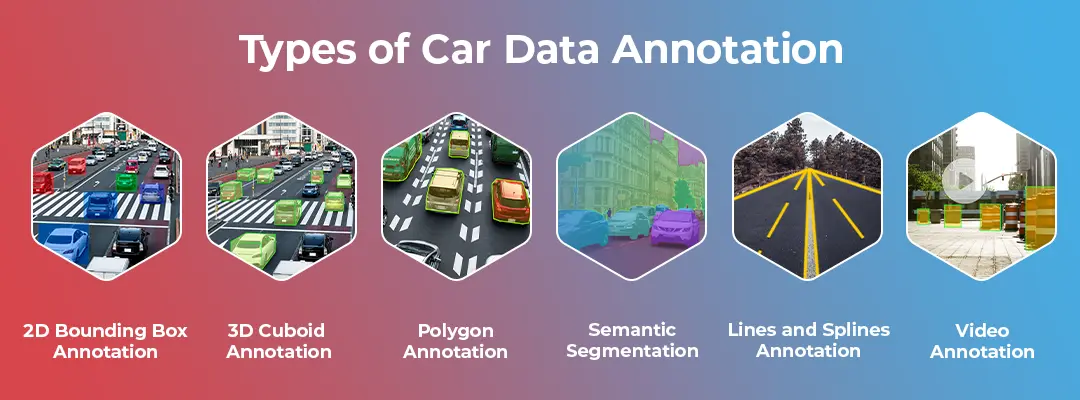Car Data Annotation: The Backbone of Autonomous Driving
In the fast-evolving world of autonomous driving, car data annotation stands as a critical component that fuels the development and refinement of self-driving technologies. As vehicles become more sophisticated, the accuracy and comprehensiveness of annotated data directly impact the performance and safety of these systems. This article delves into the intricacies of car data annotation, its importance, and the future it heralds for the automotive industry.
Understanding Car Data Annotation
Car data annotation involves the meticulous labeling of data collected from various sensors, including cameras, LiDAR, and radar, installed in autonomous vehicles. This annotated data is used to train machine learning algorithms, enabling them to recognize and respond to a multitude of real-world driving scenarios. The process includes identifying and tagging objects such as pedestrians, vehicles, traffic signs, lane markings, and other road features.
Types of Car Data Annotation
Image Annotation: Image annotation is the process of labeling images captured by cameras on the vehicle. Techniques include bounding boxes, semantic segmentation, and polygonal annotation to identify objects and their precise locations.
3D Point Cloud Annotation: LiDAR sensors produce 3D point clouds that offer a three-dimensional view of the environment. Annotating these point clouds involves classifying and segmenting objects within the 3D space.
Video Annotation: Video annotation extends image annotation to a series of frames, adding temporal context. This is crucial for tracking the movement of objects over time, aiding in dynamic decision-making.
Sensor Fusion Annotation: Combining data from multiple sensors, sensor fusion annotation creates a comprehensive view of the environment. This approach enhances the accuracy and reliability of the annotated data.
The Importance of Car Data Annotation
1. Enhancing Algorithm Accuracy:
High-quality annotated data is essential for training algorithms to accurately interpret and respond to driving scenarios. The better the data, the more reliable the autonomous system.
2. Safety and Compliance:
Accurate data annotation ensures that autonomous vehicles can detect and react to potential hazards, enhancing safety. It also helps meet regulatory requirements by proving the vehicle's capability to handle complex environments.
3. Improving Perception Systems:
Annotated data aids in the development of robust perception systems that can accurately identify and track objects, crucial for navigation and obstacle avoidance.
4. Accelerating Development Cycles:
Effective data annotation speeds up the training and validation phases, reducing the time to market for autonomous vehicles.
Challenges in Car Data Annotation
1. Complexity of Real-World Scenarios:
Real-world driving involves a multitude of scenarios, from varying weather conditions to unpredictable human behavior, making annotation a complex task.
2. Volume of Data:
Autonomous vehicles generate massive amounts of data, requiring scalable annotation solutions to handle the volume efficiently.
3. Quality Control:
Maintaining high annotation quality across large datasets is challenging but essential for reliable algorithm training.
4. Evolving Standards:
As autonomous technology evolves, so do the standards and requirements for data annotation, necessitating continuous adaptation.
Tools and Technologies for Car Data Annotation
1. Automated Annotation Tools:
Leveraging AI and machine learning, automated tools can pre-annotate data, significantly reducing the manual effort required.
2. Crowdsourcing Platforms:
Platforms that harness the power of the crowd can quickly scale annotation efforts, especially for large datasets.
3. Quality Assurance Systems:
Integrated QA systems ensure the accuracy and consistency of annotated data, crucial for training reliable algorithms.
The Future of Car Data Annotation
As autonomous driving technology progresses, the role of car data annotation will only become more pivotal. Innovations in AI and machine learning will lead to more sophisticated annotation tools, enhancing efficiency and accuracy. Additionally, the integration of real-time data annotation and continuous learning systems will enable autonomous vehicles to adapt to new scenarios on the fly.
Moreover, collaboration across the industry will be essential. Standardizing annotation practices and sharing annotated datasets can accelerate advancements, driving the entire industry forward.
In conclusion, car data annotation is the backbone of autonomous driving, providing the foundational data required to train and refine the complex algorithms that power self-driving cars. As the technology advances, so will the methods and tools used for data annotation, ensuring that autonomous vehicles become safer and more reliable, ultimately transforming the future of transportation.
By understanding the critical role of car data annotation, stakeholders in the automotive industry can better appreciate the efforts behind the scenes that drive innovation and safety in autonomous driving technologies.




Comments
Post a Comment